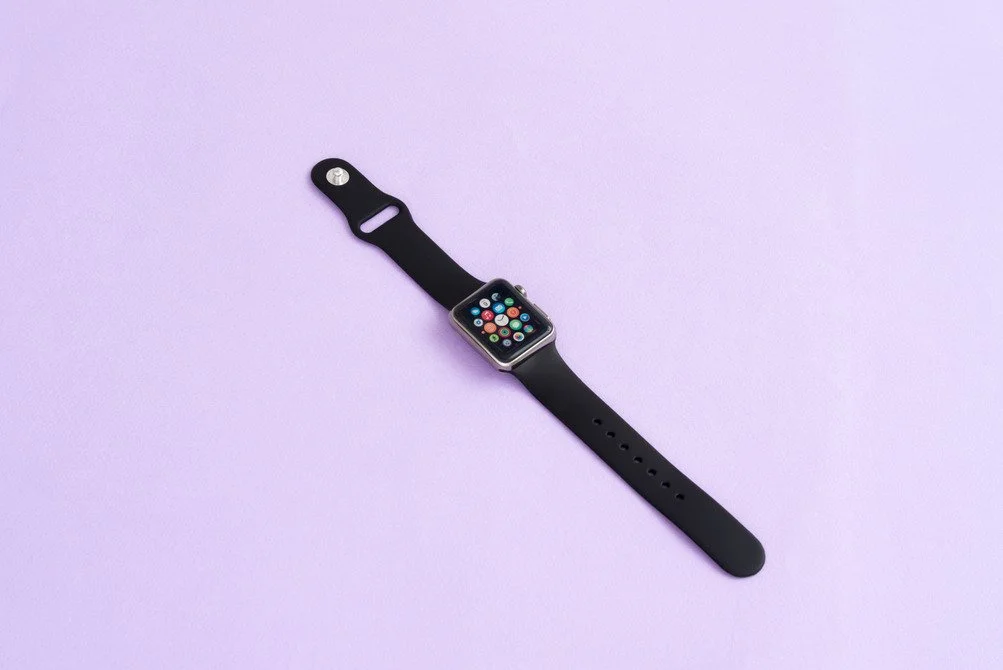How secure is your fitness tracker?
June 22, 2022 Newsletter 2 (approximately 5 minute read)
It’s been energizing to learn new things about our bodies already. And a little depressing that we didn’t know some of it before. Take the pelvic floor for example. It’s strange to learn about the existence of such an important area of our body. Perhaps you were ahead of us on this one.
We’re also enjoying the joys of launch. Thanks to everyone who hunted down their email invites and confirmations in spam and promotions folders. And to those who let us know they got more than one email to confirm their subscription. We’re just so excited to have you.
Over the next few weeks, we’ll be introducing new sections of the weekly newsletter. In Spotlights, we’ll share the personal health and wellness journeys of women we know. In Profiles, we’ll introduce you to companies working in Women’s Health, FemTech and FamTech.
The journey continues.
Maggie Ruvoldt & Stephanie Majercik
The Tasting Menu
What’s On Your Wrist? Fitness Trackers Research and Privacy
The Background On Birth Control
Pelvic Floor Health - Not Just Your Mother’s Kegels
What’s On Your Wrist? Fitness Trackers Research and Privacy
Apple watches, Fitbits, Whoops (is that the plural of Whoop?) Or maybe you’ve got a ring on it. Ōura or Motiv perhaps. There is evidence to suggest that wearing one of these has an impact on your healthy habits. You may not be the only one looking at that data.
There are multiple studies into women’s health issues using this wealth of information on fingers and wrists.
Harvard and Apple have been conducting a multi-year study, that you can opt into. The research is largely centered on menstrual cycles and gynecological health. They have been releasing results as they go and have a podcast about the study. The most striking to us was the increase in heart health concerns among participants with PCOS. More on coronary health in women in an upcoming issue.
Google is also in the research game partnering with Duke University School of Medicine and Stanford Medicine at Stanford University. In addition to the tracker data, they are gathering self-reported metrics and information input into their mobile app.
Those are only two of many studies related to trackers including one by the National Institute of Health, which aims to enroll 1 million Americans in sharing their health-related data.
Of course with all that data comes security and privacy concerns. This data isn’t protected by HIPPA, the federal law protecting patient privacy. In a recent article from VeryWell Health, Bethany Corbin,J.D., LL.M., CIPP/US, CHC, CHPC broke down the risks around period tracking apps in particular. With the concerns about the ongoing fate of Roe v. Wade, data from period tracking apps is of critical importance. You should know what information is tracked and how it can be used. As the options for what you can track continue to grow and expand, put yourself in control of your data.
The Background On Birth Control
There’s been a lot of talk lately about women’s bodies and our ability to control whether or not we carry a child. Unfortunately, this isn’t a new discussion in America. While we might take birth control - in all its different forms - for granted nowadays, it was a long-fought battle to get us to where we are today.
The Comstock Act of 1873 made contraceptives (including condoms) “obscene and illicit” and made it illegal to transport them across state lines or through the mail. And states could enact their own laws under the act, for example in New England you could be fined or imprisoned just for spreading information about contraceptives.
If Roe v. Wade is overturned, we could see states enact similar restrictions on current forms – the pill, IUDs, etc. Thankfully, we had two pioneering women advocate and financially support the development of the first birth control pill – Margaret Sanger and Katherine McCormick. Thanks to their support, we had an FDA-approved birth control pill in 1960 (really not that long ago when you think about it!)
Although if you think that it gets better from there, there’s, unfortunately, a lot more history behind birth control as we know it today, and even some of the heroes who have helped to get us here didn’t always have the greatest intentions. We learned a lot of this from this episode of the Dark History podcast and highly recommend it if you want to learn more.
Pelvic Floor Health - Not Just Your Mother’s Kegels
According to Johns Hopkins, the pelvis is a structure involved in supporting our organs and spinal cord. Men’s and women’s pelvis’ differ in depth, shape, and angle and a women’s has to support our reproductive organs in addition to other organs. Your pelvic floor is a sheet of muscles that support all those organs and does a critical job in controlling bladder and bowel function, sexual activity, and childbirth. Really important functions, if you ask us.
Here endeth the anatomy lesson, such as it was. So why is this important?
Four words - Pelvic Floor Muscle Weakness, which can cause you to have less control of those muscles leading to incontinence and painful sex. This commonly impacts women after pregnancy but it has other causes including:
Being overweight
As a side effect of IBS and other bowel conditions
Changes in hormones in menopause
Women are encouraged to do exercises to strengthen their floor but don’t often receive that advice other than during pregnancy or until an issue arises.
This isn’t talked about much except maybe in the line for the women’s room. We need more people like Kim Holderness to share their stories about starting pelvic floor therapy.
Pelvic floor therapy is a form of physical therapy devoted to strengthening these muscles and relieving the side effects of a weakened pelvic floor. It starts with finding a therapist trained specifically for pelvic floor rehab and a very thorough exam to determine how well you can contract and release these muscles. That evaluation leads to an individualized treatment plan that isn’t all Kegels (although those are good too).
Medical Term of the Week
BRCA or BReast CAncer gene.
Everyone has BRCA1 and BRCA2, two genes that are essential in keeping our DNA intact. Mutations in these genes have been found to impact the likelihood of developing cancer. Mutations in BRACA1 and BRACA2 are associated with an increased risk of breast and ovarian cancer. Mutations in BRCA2 are also associated
Introducing Spotlights
Next week, we are starting our Spotlights series. We’ll be bringing to you women sharing their own health and wellness journeys. Some of those have led them to found companies and businesses to help others.
The Latest
This week, we were inspired to read Co-Founder and CEO of Origin Carine Carmy’s story about how pelvic floor therapy ended her struggle with painful sex and led her to found Origin. (from MindBodyGreen.com)
In a recent study, 2,000 menopausal aged women were surveyed about a variety of topics related to menopause and 92% feel we need more education on the topic. We agree! (from Fortune)
Keeping track of all the appointments and tests we need in a year is hard. There may even be ones you don’t realize you need. More from us in a future issue and for now, shondaland published a list for you.
Have you ever noticed that you say things to yourself in your head that you would never say to another person about your body? Body Acceptance and Body liberation are ways to reframe that thinking. (from Equip on KaiteCouric.com)








